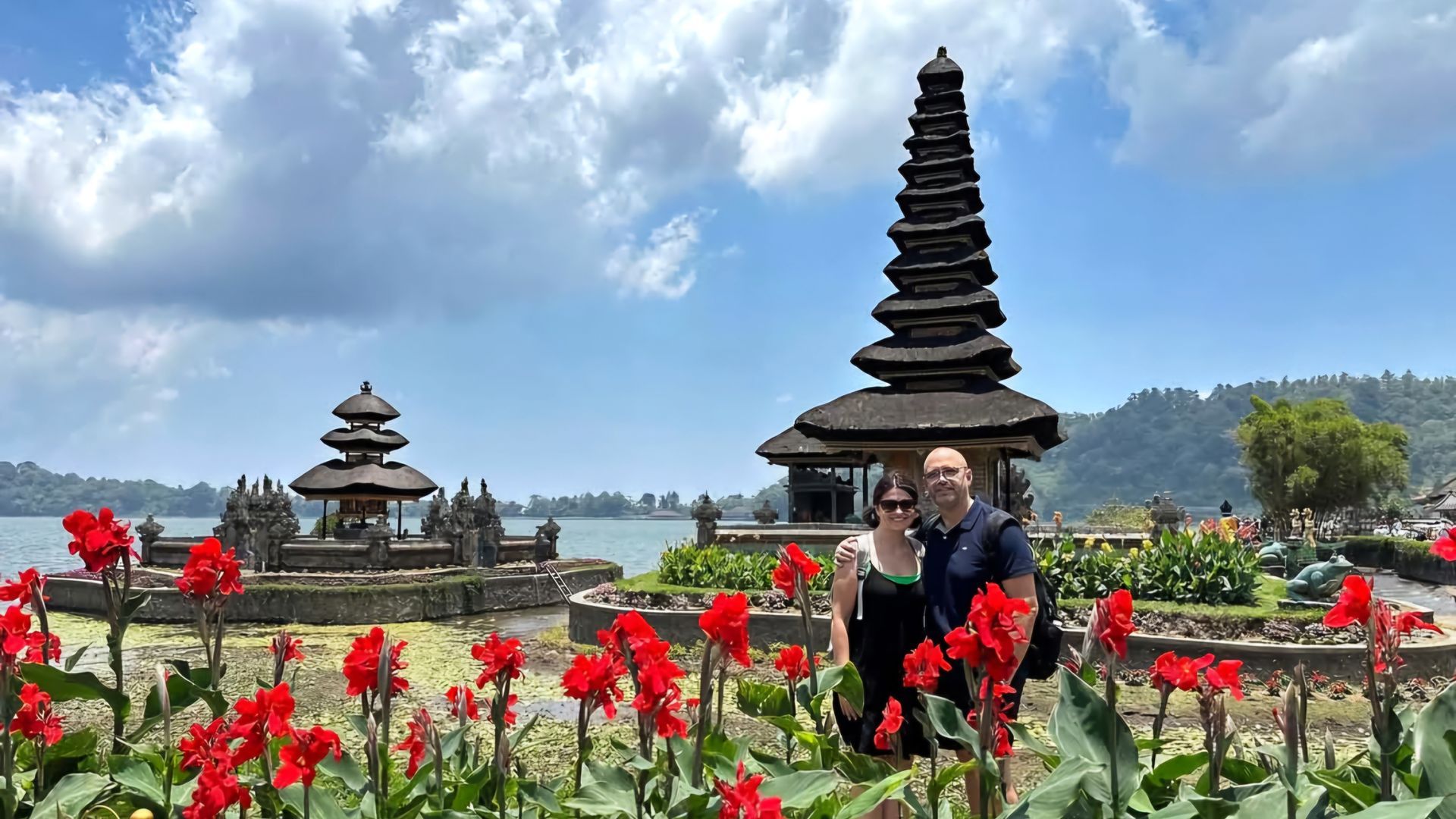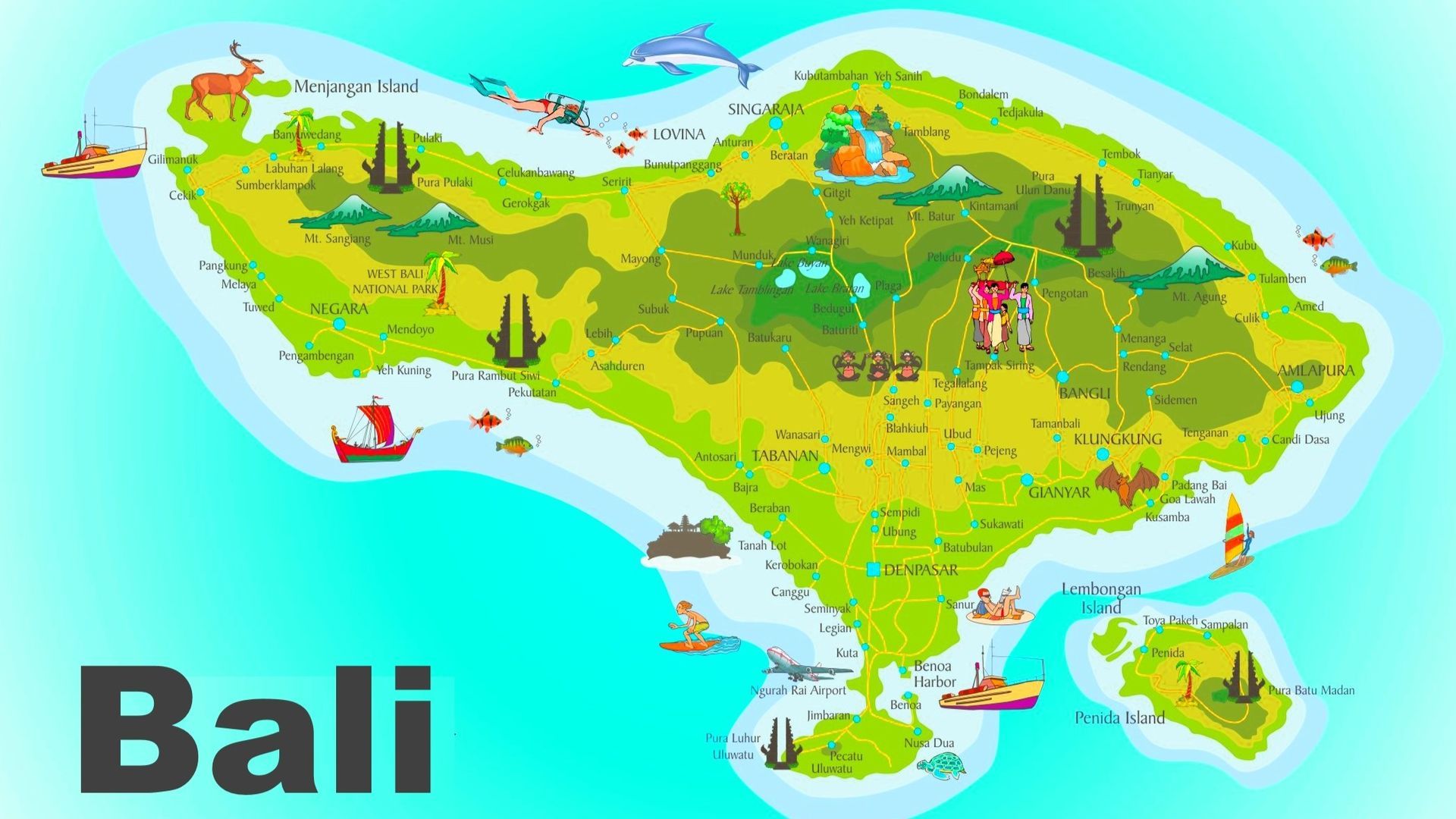Go Bali Now
The Sacred Layout of Ulun Danu Beratan Temple in Bali

Ulun Danu Beratan Temple is one of Bali’s most iconic and scenic temples. Located on the shores of Lake Beratan in Bedugul, this temple complex sits peacefully at 1,200 meters above sea level. Thanks to its unique lakeside setting and spiritual importance, it attracts both local worshippers and international travelers year-round.
The temple layout reflects the deep connection between Balinese Hinduism, water, and the mountain environment. Moreover, Ulun Danu Beratan Temple consists of multiple shrines and pavilions, each placed in a specific area to reflect a sacred purpose.
Introduction to the Temple Grounds
To begin with, visitors enter through a large stone gateway decorated with intricate Balinese carvings. This gate leads into a well-maintained garden filled with tropical flowers, green lawns, and statues of Hindu deities.
As you walk through the temple grounds, the layout unfolds gradually. You pass through open courtyards, ceremonial pavilions, and shrines built on different levels. In addition, many structures appear to float on the lake, especially during the rainy season when the water level rises.
The temple grounds are divided into five main zones, each serving different religious and symbolic functions.
First Courtyard – Welcome Area and Outer Temple Zone
The first section of the layout is the outer temple zone, also known as the Jaba Pisan in Balinese temple structure. This area functions as a welcoming space for visitors and pilgrims.
Here, you will find wide walking paths, tall trees, and ornamental gardens. Statues of gods and goddesses line the main path, creating a spiritual atmosphere right from the beginning.
Moreover, there are several open-air pavilions (bale bengong) where people can rest or prepare offerings. Local Hindus often gather in this space before beginning ceremonies. Visitors can also take photos or observe the rituals from a respectful distance.
This area connects directly to the ticketing booth and information center, which provides visitors with guidance about the temple’s history, rules, and schedule of ceremonies.
Second Courtyard – Bale Bengong and Garden Area
Next, the path leads to a garden section filled with various bale or open-sided pavilions. These pavilions are used for ceremonial dances, community meetings, and preparation of offerings.
In addition, this section includes the Pura Dalem Purwa, a temple dedicated to the goddess Durga. This smaller shrine is surrounded by flowers and often features vibrant offerings placed daily by the temple caretakers.
Walking further, you will notice a sacred tree in the middle of a lawn. This tree is wrapped in cloth and often decorated with yellow and white sashes. Locals believe it holds spiritual energy and serves as a guardian of the area.
Third Courtyard – Inner Temple Zone (Jaba Tengah)
The third courtyard marks the transition to the more sacred area. Known as the Jaba Tengah, this zone contains main altars and prayer spaces used by Balinese priests and devotees.
To enter, visitors walk through another split gate. This leads to a raised platform featuring meru towers, altars, and sacred sculptures. During holy days, priests perform elaborate rituals here, including offerings of rice, flowers, and holy water.
Several stone guardians, called dwarapala, protect the entrances to each shrine. Additionally, symbolic statues such as Nandi (Shiva’s bull) or Garuda (Vishnu’s mount) stand nearby.
While tourists are allowed to observe, only those involved in the ceremonies may step onto the raised inner platforms.
Fourth Courtyard—Main Shrines on the Lake
The fourth part of the layout is what makes Ulun Danu Beratan Temple world-famous. This is where the floating shrines are located, sitting peacefully on the lake.
The most iconic among them is the 11-tiered Meru tower, dedicated to Shiva and Parvati, the divine couple. During high tide, the base of the shrine is surrounded by water, giving the illusion that it is floating.
Nearby, you will also see smaller shrines, including a 3-tiered Meru for Dewi Danu, the goddess of the lake and fertility. She is the principal deity worshipped at Ulun Danu Beratan.
These lake shrines are only accessible by boat or during dry season. As a result, they are treated with deep reverence. The priests perform water purification and prosperity rituals in this area, especially during the rainy season.
Visitors usually pause here to take photos of the reflection of the shrines on the water. Early mornings offer the best light and fewer crowds.
Fifth Courtyard – Back Temple Grounds and Cemetery Area
The final section of the temple layout lies to the back and is rarely visited by tourists. This area includes a cemetery, meditation spots, and caretakers' housing.
Though less decorative, this space holds spiritual meaning for local people. In Balinese Hinduism, the temple layout often includes places where the cycle of life is honored—birth, growth, death, and reincarnation.
Furthermore, this quiet corner serves as a place for reflection and spiritual cleansing, especially after cremation ceremonies.
Additional Features and Facilities
Ulun Danu Beratan Temple includes more than just religious buildings. It also features supporting facilities that blend with the temple’s sacred layout.
For instance, the Eco Park nearby showcases local plants and herbs used in rituals. There’s also a Buddhist stupa located on the temple grounds, representing the harmonious relationship between different faiths in Bali.
Moreover, you’ll find a giant Ganesha statue at the southern entrance. This symbolizes protection and the removal of obstacles for all visitors.
Nearby, the temple complex houses a restaurant, souvenir shops, and restrooms—all designed to maintain a respectful distance from the sacred zones.
Symbolism in the Temple Layout
The layout of Ulun Danu Beratan Temple reflects the core Balinese cosmological philosophy known as Tri Hita Karana. This principle emphasizes harmony among humans, nature, and the divine.
- The outer gardens represent harmony with people.
- The sacred shrines reflect harmony with the gods.
- The lake and natural surroundings symbolize harmony with nature.
Each architectural element in the temple layout has a spiritual meaning. For example, the multi-tiered Meru towers symbolize Mount Meru, the sacred mountain in Hindu-Buddhist cosmology. The use of water mirrors the belief that Tirta, or holy water, brings purification and prosperity.
Practical Tips for Navigating the Temple Layout
When visiting Ulun Danu Beratan Temple, you can explore each zone in a clockwise direction, following traditional Balinese customs. Begin at the outer entrance and gradually move toward the inner shrines and lake area.
- Wear a sarong and sash, available for rent at the entrance.
- Remain quiet in the inner zones.
- Avoid stepping on or disturbing offerings.
- Take photos respectfully, especially near active ceremonies.
- Watch for signs that restrict access to priests only.
Final Thoughts on the Temple Layout
In conclusion, the layout of Ulun Danu Beratan Temple is more than architectural beauty—it is a sacred map of spiritual principles. The temple’s zones lead worshippers from the outer world into a deep connection with the divine.
With its gardens, shrines, floating sanctuaries, and serene waters, the temple invites every visitor to reflect, cleanse, and feel peace. Whether you are a pilgrim, a photographer, or a traveler, walking through its layout is a journey worth taking.

